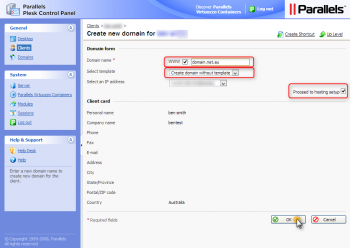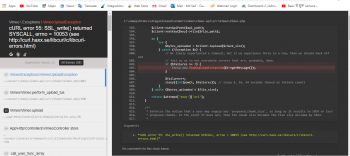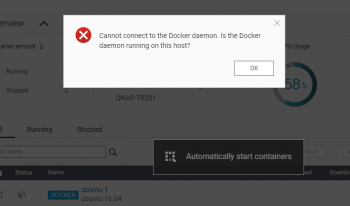Virtual Network Computing, or VNC, is a connection system that allows you to use your keyboard and mouse to interact with a graphical desktop environment on a remote server.
Here at LinuxAPT, as part of our Server Management Services, we regularly help our Customers to perform Software Installation tasks on their Linux Server.
In this context, we shall look into how to set up a VNC server with TightVNC on an Ubuntu 20.04 server and connect to it securely through an SSH tunnel.
More information about setting up VNC Server on Linux?
In this guide, we shall use a VNC client program on your local machine to interact with your server through a graphical desktop environment.
VNC makes managing files, software, and settings on a remote server easier for users who are not yet comfortable with the command line.
Here the following tools is necessary to make this a success;
One Ubuntu 20.04 server with a non-root administrative user and a firewall configured with UFW. To set this up, follow our initial server setup guide for Ubuntu 20.04.
A local computer with a VNC client installed.
The VNC client you use must support connections over SSH tunnels:
i. On Windows, you can use TightVNC, RealVNC, or UltraVNC.
ii. On macOS, you can use the built-in Screen Sharing program, or can use a cross-platform app like RealVNC.
iii. On Linux, you can choose from many options, including vinagre, krdc, RealVNC, or TightVNC.
How to set up the Desktop Environment and VNC Server?
Ubuntu 20.04 does not ship a graphical desktop environment or an inbuilt VNC server by default when installed on your Server.
Here, we need to install packages for the latest Xfce desktop environment and the TightVNC package available from the official Ubuntu repository.
Both Xfce and TightVNC are known for being lightweight and fast, which will help ensure that the VNC connection will be smooth and stable even on slower internet connections.
1. Installation of the required packages (Xfce, xfce4-goodies, TightVNC server, )
To begin, you need to establish a connection to your Server vian an SSH tool such as putty. Then follow the steps below;
a. Update the list of packages in the Server.
To do this, execute the command below;
sudo apt updateNext, install Xfce along with the xfce4-goodies package, which contains a few enhancements for the desktop environment by running the command;
sudo apt install xfce4 xfce4-goodiesWhile installation is going on, you may be prompted to choose a default display manager for Xfce. A display manager is a program that allows you to select and log in to a desktop environment through a graphical interface. You will only be using Xfce when you connect with a VNC client, and in these Xfce sessions you’ll already be logged in as your non-root Ubuntu user.
So for the purposes of this tutorial, your choice of display manager isn’t pertinent. Select either one and press 'ENTER'.
Once that installation completes, install the TightVNC server by executing the command:
sudo apt install tightvncserverNext, run the vncserver command to set a VNC access password, create the initial configuration files, and start a VNC server instance:
vncserverYou will be prompted to enter and verify a password to access your machine remotely:
Output
You will require a password to access your desktops.
Password:
Verify:The password must be between six and eight characters long. Passwords more than 8 characters will be truncated automatically. Here, we will use the password '123456'.
Once you verify the password, you’ll have the option to create a view-only password. Users who log in with the view-only password will not be able to control the VNC instance with their mouse or keyboard. This is a helpful option if you want to demonstrate something to other people using your VNC server, but this isn’t required.
The process then creates the necessary default configuration files and connection information for the server.
Additionally, it launches a default server instance on port 5901.
This port is called a display port, and is referred to by VNC as :1. VNC can launch multiple instances on other display ports, with :2 referring to port 5902, :3 referring to 5903, and so on:
Output
Would you like to enter a view-only password (y/n)? n
xauth: file /home/linuxapt/.Xauthority does not exist
New 'X' desktop is your_hostname:1
Creating default startup script /home/linuxapt/.vnc/xstartup
Starting applications specified in /home/linuxapt/.vnc/xstartup
Log file is /home/linuxapt/.vnc/your_hostname:1.logNote that if you ever want to change your password or add a view-only password, you can do so with the vncpasswd command:
vncpasswdAt this point, the VNC server is installed and running. Now let’s configure it to launch Xfce and give us access to the server through a graphical interface.
2. How to Configure the VNC Server?
The VNC server needs to know which commands to execute when it starts up. Specifically, VNC needs to know which graphical desktop environment it should connect to.
The commands that the VNC server runs at startup are located in a configuration file called xstartup in the .vnc folder under your home directory. The startup script was created when you ran the vncserver command in the previous step, but you’ll create your own to launch the Xfce desktop.
Because you are going to be changing how the VNC server is configured, first stop the VNC server instance that is running on port 5901 with the following command:
vncserver -kill :1The output will look like this, although you’ll see a different PID:
Output
Killing Xtightvnc process ID 17648Before you modify the xstartup file, back up the original:
mv ~/.vnc/xstartup ~/.vnc/xstartup.bakNow create a new xstartup file and open it in a text editor, such as nano:
nano ~/.vnc/xstartupThen add the following lines to the file:
~/.vnc/xstartup
#!/bin/bash
xrdb $HOME/.Xresources
startxfce4 &The first line is a shebang. In executable plain-text files on *nix platforms, a shebang tells the system what interpreter to pass that file to for execution. In this case, you’re passing the file to the Bash interpreter. This will allow each successive line to be executed as commands, in order.
The first command in the file, xrdb $HOME/.Xresources, tells VNC’s GUI framework to read the server user’s .Xresources file. .Xresources is where a user can make changes to certain settings of the graphical desktop, like terminal colors, cursor themes, and font rendering. The second command tells the server to launch Xfce. Whenever you start or restart the VNC server, these commands will execute automatically.
Save and close the file after adding these lines. If you used nano, do so by pressing CTRL + X, Y, then ENTER.
To ensure that the VNC server will be able to use this new startup file properly, you’ll need to make it executable:
chmod +x ~/.vnc/xstartupThen restart the VNC server:
vncserver -localhost
Notice that this time the command includes the -localhost option, which binds the VNC server to your server’s loopback interface. This will cause VNC to only allow connections that originate from the server on which it’s installed.
In the next step, you’ll establish an SSH tunnel between your local machine and your server, essentially tricking VNC into thinking that the connection from your local machine originated on your server. This strategy will add an extra layer of security around VNC, as the only users who will be able to access it are those that already have SSH access to your server.
You will see output similar to this:
Output
New 'X' desktop is your_hostname:1
Starting applications specified in /home/linuxapt/.vnc/xstartup
Log file is /home/linuxapt/.vnc/your_hostname:1.logWith the configuration in place, you’re ready to connect to the VNC server from your local machine.
3. How to Connect to the VNC Desktop Securely?
VNC on its own does not use secure protocols when connecting. To securely connect to your server, you’ll establish an SSH tunnel and then tell your VNC client to connect using that tunnel rather than making a direct connection.
Create an SSH connection on your local computer that securely forwards to the localhost connection for VNC. You can do this via the terminal on Linux or macOS with the following ssh command:
ssh -L 59000:localhost:5901 -C -N -l linuxapt your_server_ipHere is what this ssh command's options mean:
-L 59000:localhost:5901: The -L switch specifies that the given port on the local computer (59000) is to be forwarded to the given host and port on the destination server (localhost:5901, meaning port 5901 on the destination server, defined as your_server_ip). Note that the local port you specify is somewhat arbitrary; as long as the port isn’t already bound to another service, you can use it as the forwarding port for your tunnel.
-C: This flag enables compression which can help minimize resource consumption and speed things up.
-N: This option tells ssh that you don’t want to execute any remote commands. This setting is useful when you just want to forward ports.
-l linuxapt your_server_ip: The -l switch let’s you specify the user you want to log in as once you connect to the server. Make sure to replace linuxapt and your_server_ip with the name of your non-root user and your server’s IP address.
Note: This command establishes an SSH tunnel that forwards information from port 5901 on your VNC server to port 59000 on your local machine via port 22 on each machine, the default port for SSH.
This is more secure than simply opening up your server’s firewall to allow connections to port 5901, as that would allow anyone to access your server over VNC. By connecting over an SSH tunnel, you’re limiting VNC access to machines that already have SSH access to the server.
If you are using PuTTY to connect to your server, you can create an SSH tunnel by;
i. Right-click on the top bar of the terminal window, and then clicking the Change Settings… option.
ii. Find the Connection branch in the tree menu on the left-hand side of the PuTTY Reconfiguration window.
iii. Expand the SSH branch and click on Tunnels.
iv. On the Options controlling SSH port forwarding screen, enter 59000 as the Source Port and localhost:5901 as the Destination.
v. Then click the Add button, and then the Apply button to implement the tunnel.
vi. Once the tunnel is running, use a VNC client to connect to localhost:59000.
vii. You will be prompted to authenticate using the password (123456) you set in first step.
This will get you connected to the default Xfce desktop.
You can access files in your home directory with the file manager or from the command line from the Xfce desktop.
viii. Press CTRL+C in your local terminal to stop the SSH tunnel and return to your prompt. This will disconnect your VNC session as well.
Now you can configure your VNC server to run as a systemd service.
4. Running VNC as a System Service
By setting up the VNC server to run as a systemd service you can start, stop, and restart it as needed, like any other service. You can also use systemd’s management commands to ensure that VNC starts when your server boots up.
i. Start by creating a new unit file called /etc/systemd/system/vncserver@.service with the command:
sudo nano /etc/systemd/system/vncserver@.serviceThe @ symbol at the end of the name will let us pass in an argument you can use in the service configuration. You’ll use this to specify the VNC display port you want to use when you manage the service.
ii. Then, Add the following lines to the file. Be sure to change the value of User, Group, WorkingDirectory, and the username in the value of PIDFILE to match your username:
/etc/systemd/system/vncserver@.service
[Unit]
Description=Start TightVNC server at startup
After=syslog.target network.target
[Service]
Type=forking
User=sammy
Group=sammy
WorkingDirectory=/home/sammy
PIDFile=/home/sammy/.vnc/%H:%i.pid
ExecStartPre=-/usr/bin/vncserver -kill :%i > /dev/null 2>&1
ExecStart=/usr/bin/vncserver -depth 24 -geometry 1280x800 -localhost :%i
ExecStop=/usr/bin/vncserver -kill :%i
[Install]
WantedBy=multi-user.target
The ExecStartPre command stops VNC if it’s already running. The ExecStart command starts VNC and sets the color depth to 24-bit color with a resolution of 1280x800. You can modify these startup options as well to meet your needs. Also, note that the ExecStart command again includes the -localhost option.
iii. Save and close the file.
iv. Next, make the system aware of the new unit file:
sudo systemctl daemon-reloadv. Enable the unit file by running:
sudo systemctl enable vncserver@1.serviceThe 1 following the @ sign signifies which display number the service should appear over, in this case the default :1 as was discussed in Step 2.
vi. Stop the current instance of the VNC server if it’s still running:
vncserver -kill :1vii. Then start it as you would start any other systemd service:
sudo systemctl start vncserver@1viii. You can verify that it started with this command:
sudo systemctl status vncserver@1If it started correctly, the output should look like this:
Output
● vncserver@1.service - Start TightVNC server at startup
Loaded: loaded (/etc/systemd/system/vncserver@.service; enabled; vendor preset: enabled)
Active: active (running) since Thu 2020-08-07 17:23:50 UTC; 6s ago
Process: 39768 ExecStartPre=/usr/bin/vncserver -kill :1 > /dev/null 2>&1 (code=exited, status=2)
Process: 39772 ExecStart=/usr/bin/vncserver -depth 24 -geometry 1280x800 :1 (code=exited, status=0/SUCCESS)
Main PID: 39795 (Xtightvnc)
...Your VNC server is now ready to use whenever your server boots up, and you can manage it with systemctl commands like any other systemd service.
However, there won’t be any difference on the client side. To reconnect, start your SSH tunnel again:
ssh -L 59000:localhost:5901 -C -N -l linuxapt your_server_ipThen make a new connection using your VNC client software to localhost:59000 to connect to your server.
















